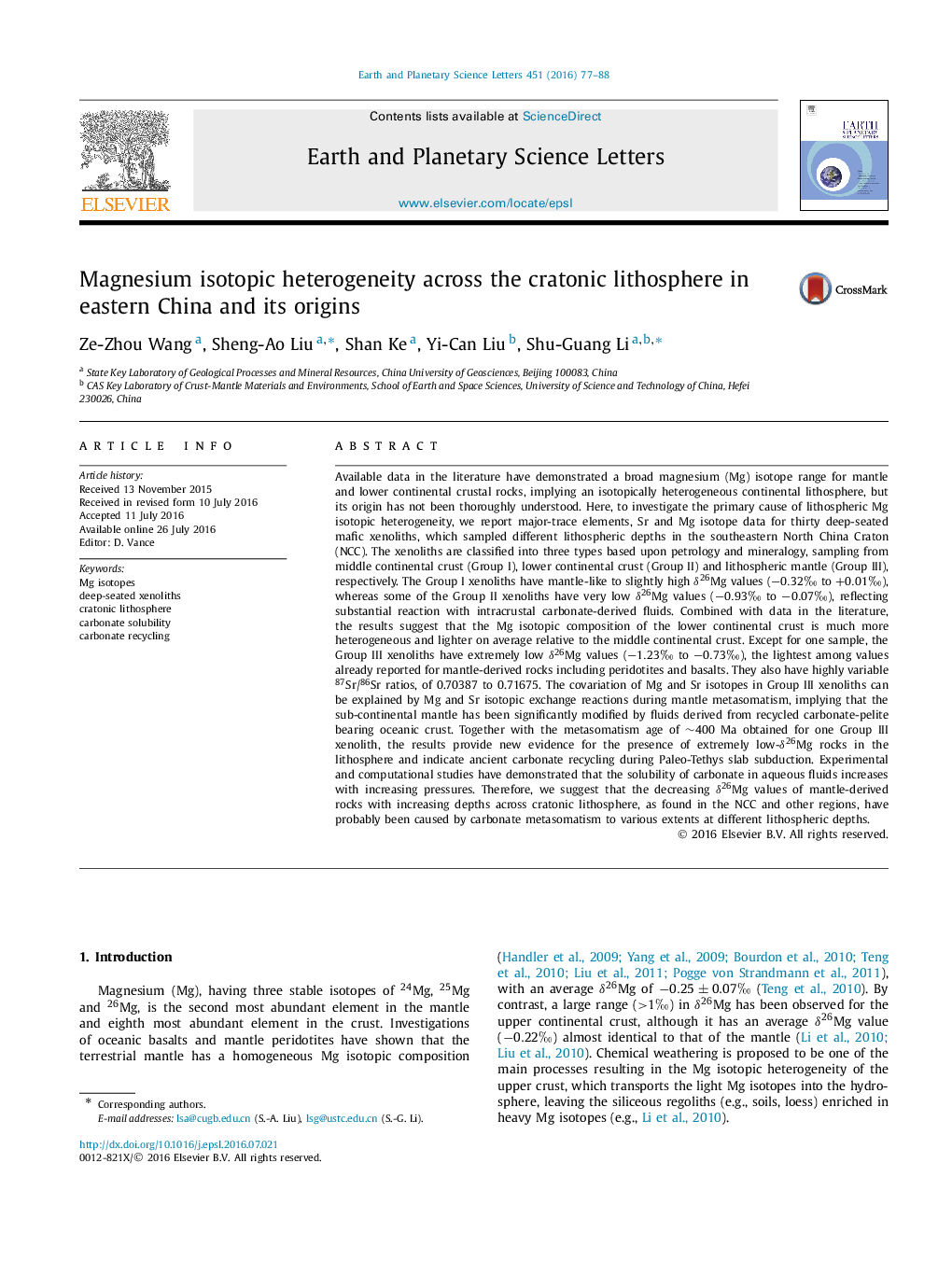| کد مقاله | کد نشریه | سال انتشار | مقاله انگلیسی | نسخه تمام متن |
|---|---|---|---|---|
| 6427249 | 1634705 | 2016 | 12 صفحه PDF | دانلود رایگان |

- Mg isotopes of mafic xenoliths that sampled different lithospheric depths were investigated.
- LCC is highly isotopically heterogeneous and lighter on average relative to the MCC.
- Extreme light Mg isotopic compositions were found in mantle-derived rocks.
- Mg isotopic heterogeneity across cratonic lithosphere was caused by carbonate metasomatism depending on carbonate solubility.
Available data in the literature have demonstrated a broad magnesium (Mg) isotope range for mantle and lower continental crustal rocks, implying an isotopically heterogeneous continental lithosphere, but its origin has not been thoroughly understood. Here, to investigate the primary cause of lithospheric Mg isotopic heterogeneity, we report major-trace elements, Sr and Mg isotope data for thirty deep-seated mafic xenoliths, which sampled different lithospheric depths in the southeastern North China Craton (NCC). The xenoliths are classified into three types based upon petrology and mineralogy, sampling from middle continental crust (Group I), lower continental crust (Group II) and lithospheric mantle (Group III), respectively. The Group I xenoliths have mantle-like to slightly high δ26Mg values (â0.32â° to +0.01â°), whereas some of the Group II xenoliths have very low δ26Mg values (â0.93â° to â0.07â°), reflecting substantial reaction with intracrustal carbonate-derived fluids. Combined with data in the literature, the results suggest that the Mg isotopic composition of the lower continental crust is much more heterogeneous and lighter on average relative to the middle continental crust. Except for one sample, the Group III xenoliths have extremely low δ26Mg values (â1.23â° to â0.73â°), the lightest among values already reported for mantle-derived rocks including peridotites and basalts. They also have highly variable 87Sr/86Sr ratios, of 0.70387 to 0.71675. The covariation of Mg and Sr isotopes in Group III xenoliths can be explained by Mg and Sr isotopic exchange reactions during mantle metasomatism, implying that the sub-continental mantle has been significantly modified by fluids derived from recycled carbonate-pelite bearing oceanic crust. Together with the metasomatism age of â¼400 Ma obtained for one Group III xenolith, the results provide new evidence for the presence of extremely low-δ26Mg rocks in the lithosphere and indicate ancient carbonate recycling during Paleo-Tethys slab subduction. Experimental and computational studies have demonstrated that the solubility of carbonate in aqueous fluids increases with increasing pressures. Therefore, we suggest that the decreasing δ26Mg values of mantle-derived rocks with increasing depths across cratonic lithosphere, as found in the NCC and other regions, have probably been caused by carbonate metasomatism to various extents at different lithospheric depths.
Journal: Earth and Planetary Science Letters - Volume 451, 1 October 2016, Pages 77-88